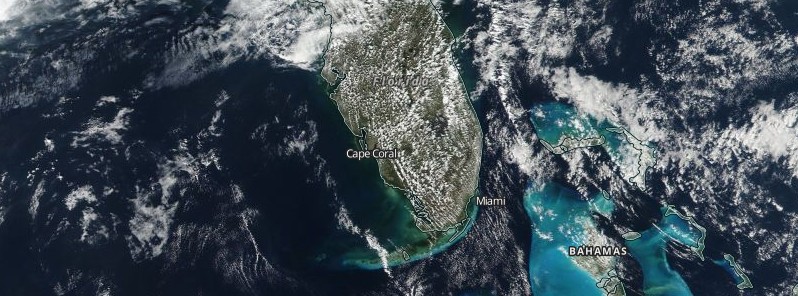Florida shatters December temperature records

While December temperatures across the United States reached record low levels over the past couple of days, the winter in Miami, and Florida in general, felt a lot like summer.
As another polar blast caused numerous problems from coast to coast over the past several days, bringing record low December temperatures to several regions (Boston on December 16, Denver on December 17, Southern California on December 18, and Little Rock, Arkansas on December 19), Florida felt a lot like summer, breaking several December temperature records.
On December 18, NWS Miami reports, Miami broke warmest minimum temperature with 26.1 °C (79 °F) breaking the previos record of 23.3 °C (74 °F) set in 1933.
On the same day, Fort Lauderdale broke its warmest minimum temperature record too. The low temperature only fell to 25 °C (77 °F) breaking the previous record of 23.8 °C (75 °F) set in 2006.
Palm Beach also broke its warmest minimum temperature, on the same day, with 25 °C (77 °F), breaking the previous record of 22.7 °C (73 °F) set in 2006.
Weather stations in Miami recorded a maxium temperature of 30 °C (86 °F) at 11am on Monday, December 19, breaking the old record of 29.4 °C (85 °F) for this date.
Miami breaks warmest min temp yesterday, December 18. The low temp only fell to 79 deg breaking the previous record of 74 set in 1933. #flwx
— NWS Miami (@NWSMiami) December 19, 2016
Palm Beach breaks warmest min temp yesterday, Dec 18. The low temp fell only to 77 deg breaking the previous rec of 73 back in 2006
— NWS Miami (@NWSMiami) December 19, 2016
Fort Lauderdale breaks warmest min temp yesterday, Dec 18. The low temp fell only to 77 deg breaking the previous rec of 75 back in 2006
— NWS Miami (@NWSMiami) December 19, 2016
Miami tied its all-time Dec warm min daily temp of 79F yesterday, Dec 18. Last time the low was 79 in Miami in December was 12/2/1901 #FLwx
— NWS Miami (@NWSMiami) December 19, 2016
Miami has set a record high for today, Mon 12/19. Temp already hit 86 as of 11am, breaking the old record of 85 for this date #flwx
— NWS Miami (@NWSMiami) December 19, 2016
“It’s not just hot, it’s so humid, too,” said University of Miami tropical weather expert Brian McNoldy for the Miami Herald. “It’s as if winter or fall never happened.”
“Blame the stickiness on a confluence of unlucky weather. From the north, winter cold fronts that typically keep us cool fizzled before they arrived. From the south, a high pressure ridge keeps pushing along warm air from the tropics, McNoldy said. While this hot December follows a similar steamy end to last year, the two are not the same. Last year’s heat, accompanied by record rain that shut down Zoo Miami, was part of an intense El Niño magnifying summer-like conditions across much of the southeastern U.S. This year’s heat is much more localized, he said.
Since December 2014, Miami has endured the warmest 24-month period on record, said Chris Fenimore, a physical scientist at the National Oceanic and Atmospheric Administration’s National Centers for Environmental Information.
The trend could be caused by warm ocean waters surrounding the peninsula, he said. Or the annoying upper air circulation that blocked or weakened the seasonal fronts.
Featured image credit: NASA/NOAA/DoD Suomi NPP/VIIRS. Acquired: December 18, 2016

Nobody cares. No hurricanes. If we suffer a flurry of big major hurricanes, then people will care — at least for that hurricane season but not in the following years if there is again a shortage of major hurricanes.
Snow in the Sahara desert- Only the second time in living memory
The second time in living memory, and the first time in 37 years.
Snow was last seen in the Algerian town of Ain Sefra on February 18, 1979. At that time, the snow storm lasted just half an hour. This time the snow stayed for a day.
Ain Sefra is about 3280 feet (1000 m) above sea level.
And remember, Algeria is south of the Mediterranean Sea
Solar Minimum